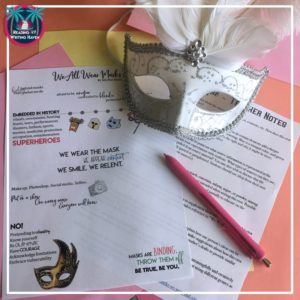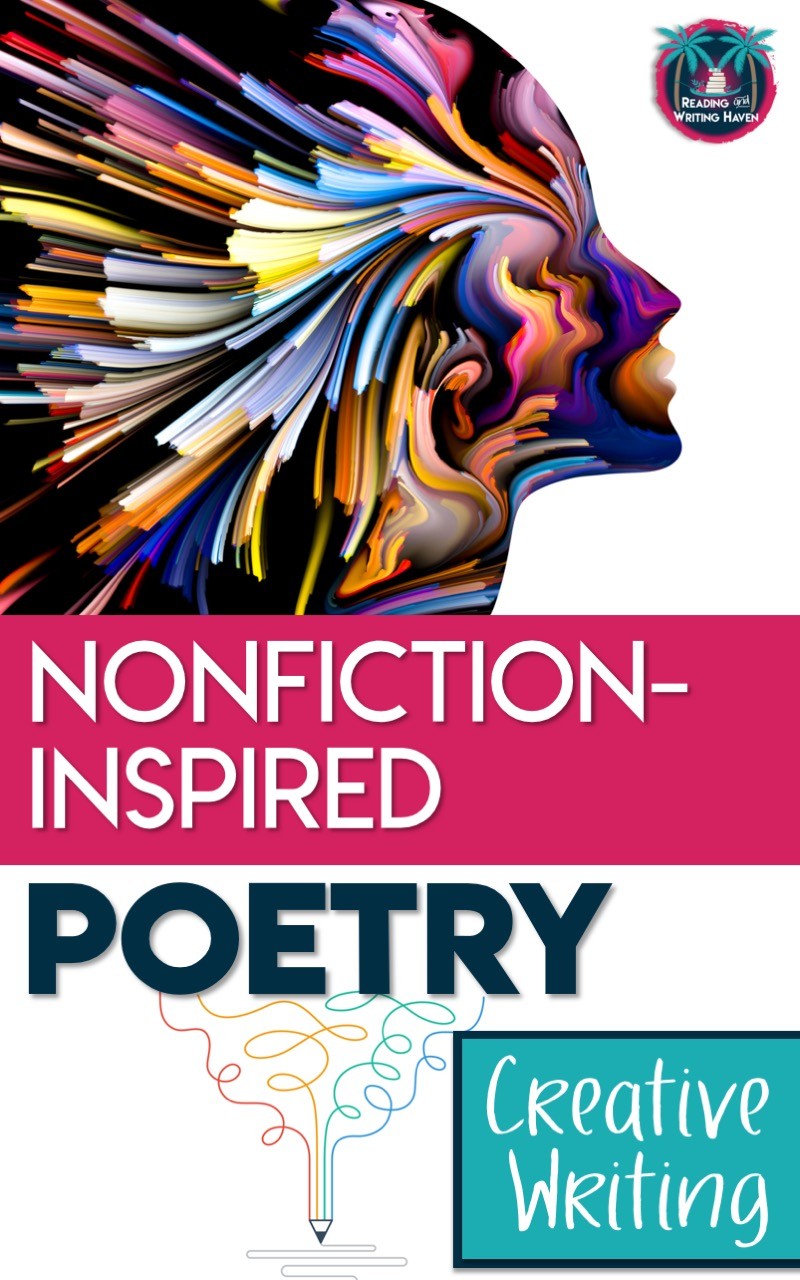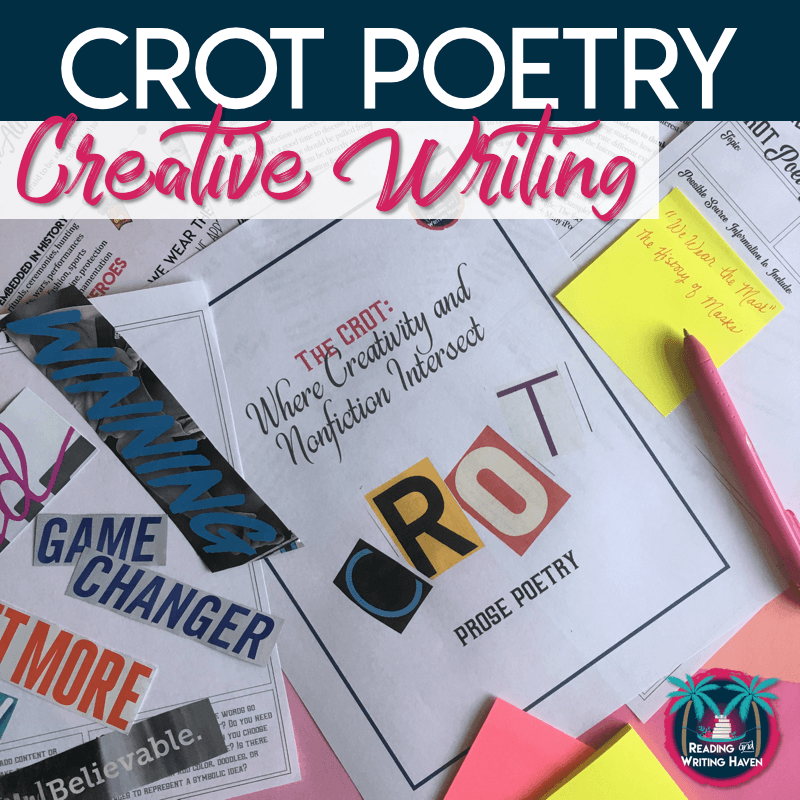Nonfiction-Inspired Poetry: A Creative Writing Assignment
Poetry and nonfiction are quite possibly two of the most polarizing text genres for both teachers and students. People tend to gravitate toward them or away from them, but they are both so important in the ELA curriculum. Students need to be able to read and write about nonfiction and poetry. In today’s post, I’m sharing one of my favorite creative writing assignments for secondary ELA.
In the past, I’ve written about ways to make poetry engaging as well as how to write poetry inspired by pictures. Since poetry is not my favorite genre to teach, I’ve really had to do some research to find assignments that my students will enjoy. Reading and analyzing it is not really the issue. When I ask students to write poetry, they generally seem less than inspired.
I first learned about this type of poetry when I was reading A Teacher’s Guide to the Multigenre Research Project. What I love about it is that it combines elements of found poetry, concrete poetry, and collages. In her book, Lutz calls this form of poetry a crot. Crots are snippets of thoughts…short fragments. As a creative writing assignment, the crot blurs the lines between prose and poetry, and the power rests on the author’s creativity in expression.
What I like to do with this type of creative writing assignment is ask students to respond to nonfiction (and fiction) texts thoughtfully during our poetry or multigenre unit. It really is a fun assignment to teach, to write, and to grade. Here’s how I introduce it to my students:
1. Read a nonfiction text.
So we begin by reading and annotating the source that we will use as inspiration for the crot. I love to allow students choice. Their passion about the topic brings out their best work. Still, I use a model to demonstrate. The example above references research from two different nonfiction articles as well as a Disney movie and Paul Laurence Dunbar’s poem “We Wear the Mask.”
These crots, or collage poems, can be written without research, but the whole purpose as I use them is to present knowledge learned about a topic in an inspiring and nontraditional way. Still, they should be taking that information and using it to convey an original idea. When students use multiple sources, I ask them to unify the themes in their crot.
2. Teach students about white space.
One of the fun parts of writing poetry that consists of short snippets of thought is that the author gets to decide where to place those thoughts on the page. Placement should be strategic and even symbolic. I seize this opportunity to give students a brief lesson on marketing. Less is more.
3. Emphasize the importance of the artistic approach.
Crots that involve symbolic color, fonts with bold personalities, and uniquely arranged information will have a deeper meaning than those that are typed linearly in all 12 point Times New Roman font.
Have students do some research about what different colors might symbolize. Ask them to think about the content they are writing. How can it be arranged to represent differences in opinion, sequence, or cause and effect? Allow students the opportunity to add doodles, images, and even magazine word or letter cut-outs to their crots for added zest.
4. Be clear about expectations.
One of the mistakes I made the first time I asked students to write this nonfiction-inspired poetry was in not clarifying how many sources I wanted them to use and how much research I expected them to incorporate. I ended up with some students who only had one line from their crot that conveyed an idea from research. Be clear about what percentage of the poem or how many times you want a reference from the source.
Consider whether you want to teach students to use footnotes or endnotes. Traditional citations would be too intrusive for this context, but asking students to use superscript numbers or to provide an endnotes page can offer a polished effect that emphasizes the research component of the assignment.
5. Allow time for peer feedback.
One of the most powerful parts of writing these crots has been allowing my students time to discuss their work. They have such amazing ideas for one another regarding how to represent ideas more symbolically through color, arrangement, figurative language, and imagery. Consider supplying them with the rubric you intend to use while grading to focus their suggestions.
Students always enjoy looking back at the initial draft of their poems, noting how much they develop through the revision process.
If you are looking for a way to meaningfully engage students in critical thinking while writing poetry inspired by nonfiction source material, try this unique creative writing assignment. Hang their final products as artwork in your classroom. Surrounding ourselves with happy, bright poetry goes a long way in the battle to change reluctant students’ attitudes about the genre in general.
RELATED RESOURCE:
You can find the assignment I use with students by clicking on the image below.
[sc name=”mailchimp1″]


